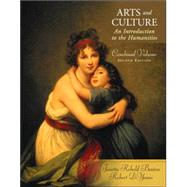
| The Dawn of Culture | |
| Ancient Egypt | |
| Aegean Culture and Early Greece | |
| Classical and Hellenistic Greece | |
| Roman Civilization | |
| Judaism, Early Christianity, and Byzantine Civilization | |
| Islamic Civilization | |
| Indian Civilization | |
| Early Chinese & Japanese Civilizations | |
| Early Civilizations of the Americas & Africa | |
| Early Middle Ages and the Romanesque | |
| Gothic and Late Middle Ages | |
| The Renaissance and Mannerism in Italy | |
| The Renaissance in Northern Europe | |
| The Baroque Age | |
| The Eighteenth Century | |
| Romanticism and Realism | |
| The Belle Eacute;poque: Impressionism and post-Impressionism | |
| Chinese Civilization After the Thirteenth Century | |
| Japanese Civilization After the Fifteenth Century | |
| Age of Anxiety: World War I and After | |
| Modern Africa and Latin America | |
| Age of Affluence: World War II and After | |
| Diversity in Contemporary Life | |
| Glossary | |
| Picture Credits and Further Information | |
| Literature Credits | |
| Index | |
| Table of Contents provided by Publisher. All Rights Reserved. |
The New copy of this book will include any supplemental materials advertised. Please check the title of the book to determine if it should include any access cards, study guides, lab manuals, CDs, etc.
The Used, Rental and eBook copies of this book are not guaranteed to include any supplemental materials. Typically, only the book itself is included. This is true even if the title states it includes any access cards, study guides, lab manuals, CDs, etc.